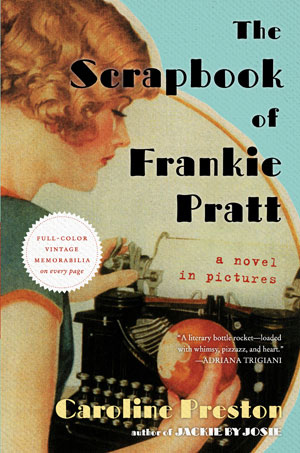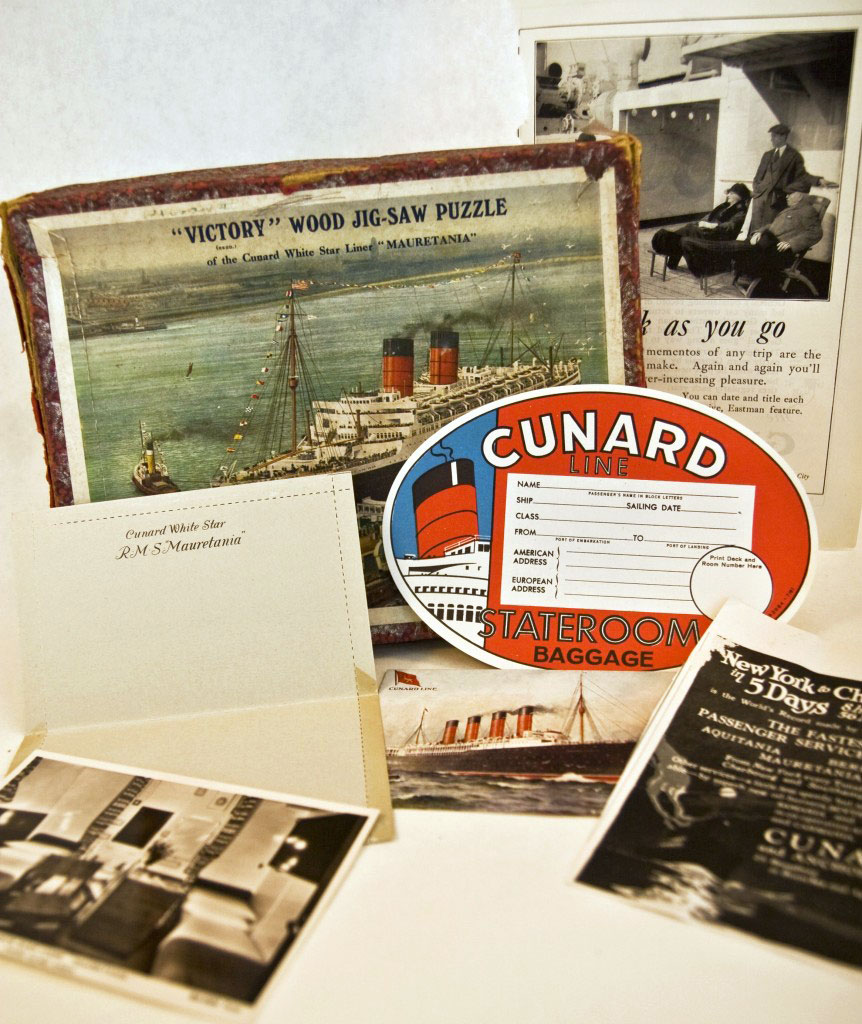Archivist Turned Novelist
An interview with Caroline Preston, whose new “scrapbook novel” reveals her ephemera addiction By Nate PedersenNate Pedersen is a contributing writer at Fine Books & Collections. His website is natepedersen.com.
Author Caroline Preston’s new “scrapbook novel” follows the life of Frankie Pratt, a young girl with writerly ambitions, who graduates high school in rural New Hampshire in 1920. For her graduation present, she receives a scrapbook. The scrapbook accompanies her from New Hampshire to Vassar College, to the bohemian circles of Greenwich Village, and across the Atlantic to the artistic life in Paris, as Frankie pursues love, opportunity, and career. All the while, Frankie carefully maintains her scrapbook, filling it with period ephemera such as postcards, magazine ads, menus, ticket stubs, fashion spreads, and more. The end result, this scrapbook novel, is a gorgeous recreation of the pop culture of the twenties, with full-color vintage paper popping out of every page.
The novel so captivated us (read our review) that we wanted to speak with Preston about the process of assembling The Scrapbook of Frankie Pratt and her thoughts on collecting ephemera.
NP: This might be a “chicken or the egg” question, but I’m curious: what came first, the story or the ephemera?
CP: The story. I decided to try to write a scrapbook novel. I started with the bare outlines of the story—that it would be a coming of age story about a girl, Frankie Pratt, living in a very rural town in New Hampshire who wants to go to college but it’s out of her reach because of her circumstances. Then, throughout the story, she is able to go to Vassar, Greenwich Village, and Paris and that was the basic outline of the story. So I took it from there and worked on each chapter individually. I collected the ephemera in big boxes for each chapter, almost the way Frankie would have, then just spilled it all out and let the story evolve from what I’d collected.
NP: Was there a starting piece of ephemera that started the whole project?
CP: I started with the first chapter and I gathered the ephemera for that—surprisingly I actually had a fair amount of those things—the seed packet, the postcard of Cornish, for example. There really wasn’t a starting point besides saying, “I’m going to write a novel in the form of vintage scrapbook.” And I had to figure out how I was going to do that—how it would work and the format of it—what size it would be. Originally the pages were going to be eight by ten, but then I decided to reduce it in size so it would sit in your hands like a novel. If you make an oversized book then no one knows how to read it! I have a collection of scrapbooks, and I went out and bought some from the 1920s, so I looked at those for inspiration. I soon realized that there were no shortcuts and it would have to be pieces of vintage ephemera glued together to be really authentic.
NP: I remember as I read it, marveling at the reader’s card from Shakespeare & Company in Paris, and wondering if perhaps you found that card with the name Frances Pratt on it and developed the whole story from there.
CP: No, I didn’t find the card. There was a good deal of forgery in certain things. Sylvia Beach was my mother’s godmother. So I have some letters from Beach and a really great photograph of Joyce that she sent to my grandmother. I created that reader’s card from letterhead stationery that I had—I monkeyed around with that and put it on antique card stock and then typed on it.
Another forgery was the Vassar report card. I went to the Vassar archives and got copies of old report cards, but of course they were made out to other people, so I whitened them out and copied them on to old paper and typed up Frankie’s report card. So there was a little bit of manuscript sleuthing in the scrapbook.












